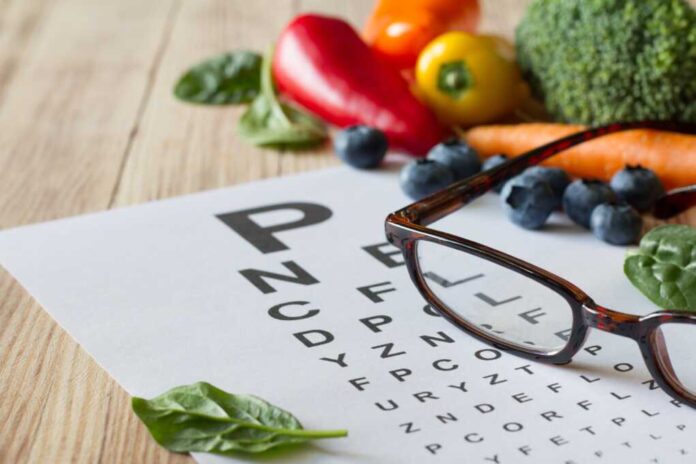
Research reveals that consuming specific nutrients through diet can reduce the risk of age-related macular degeneration by up to 25%, offering hope where medical treatments fall short.
At a Glance
- Essential nutrients for eye health include vitamins A, C, E, zinc, lutein, zeaxanthin, and omega-3 fatty acids
- The Mediterranean diet, rich in plant-based foods and seafood, significantly reduces AMD risk
- Low glycemic index foods help maintain stable blood sugar levels, beneficial for both diabetes and AMD prevention
- AREDS2 supplements may reduce progression from intermediate to advanced AMD by approximately 25%
Understanding Age-Related Macular Degeneration
Age-Related Macular Degeneration (AMD) represents one of the leading causes of vision loss in people over 60. This condition involves the deterioration of the macula, the central part of the retina responsible for sharp, detailed vision. As deposits form in the macula, they cause damage that results in decreased central vision. The condition typically manifests through symptoms including wavy lines, blurry vision, blind spots, and occasionally altered color perception. While there’s no definitive cure for AMD, research increasingly points to nutrition as a powerful tool for prevention and management.
Critical Nutrients for Eye Health
Several key nutrients have been identified as particularly beneficial for eye health and AMD prevention. Vitamin A, essential for retinal function and preventing dry eye, can be found in orange and yellow vegetables. Vitamin C protects against free radical damage and supports tissue repair, while vitamin E helps maintain healthy cells. Zinc plays a crucial role in retinal health, bringing vitamin A from the liver to the retina. Perhaps most significant for AMD prevention are lutein and zeaxanthin, which specifically protect the macula from harmful light and oxidative damage.
Omega-3 fatty acids, particularly EPA and DHA found in fatty fish, have shown promising results in preserving eye function and reducing inflammation. Research indicates that consuming fish rich in omega-3s twice weekly can significantly reduce AMD risk while simultaneously benefiting heart health. For those with dry eye syndrome, a condition often accompanying AMD, omega-3 supplements may offer additional relief according to recent studies.
Best Food Sources for Eye-Protective Nutrients
Dark leafy greens like kale, spinach, and collard greens provide abundant lutein and zeaxanthin. Though carrots have long been associated with eye health due to their vitamin A content, greens actually offer more potent protection against AMD. Orange and yellow vegetables including sweet potatoes, carrots, and squash deliver substantial vitamin A. As ophthalmologist Dr. Rebecca J. Taylor notes, “A sweet potato has more than 200% of the daily dose of vitamin A doctors recommend.” Citrus fruits, bell peppers, and berries provide vitamin C, while nuts, seeds, and avocados offer vitamin E.
For zinc, look to beans, oysters, lean red meat, poultry, and fortified cereals. Omega-3 fatty acids are abundant in fatty fish like salmon, mackerel, and sardines, as well as walnuts and flaxseeds. Eggs deliver a powerful combination of lutein, zeaxanthin, vitamin A, and zinc, making them an excellent all-around food for eye health. The typical “Eat your carrots” advice isn’t wrong, but modern research suggests a more varied approach to nutritional eye protection.
Dietary Patterns for AMD Prevention
Beyond individual nutrients, certain dietary patterns show significant promise for AMD prevention. The Mediterranean diet, characterized by abundant fruits, vegetables, whole grains, nuts, legumes, and fish, has been associated with reduced AMD risk in multiple studies. This approach naturally incorporates many of the key nutrients needed for eye health while limiting processed foods and unhealthy fats that may contribute to inflammation and oxidative stress.
Following a low glycemic index diet may also benefit eye health. Foods with a low GI value release glucose slowly into the bloodstream, helping maintain stable blood sugar levels. Research indicates that people consuming low GI diets tend to have lower incidences of heart disease, obesity, diabetes, and AMD. For those already diagnosed with AMD, especially the wet form which requires urgent care, maintaining both a healthy diet and regular treatment with an ophthalmologist is essential for managing the condition.
Supplements and Medical Guidance
While obtaining nutrients through diet remains the preferred approach, supplements may be beneficial in specific circumstances. The National Eye Institute’s AREDS2 formula has been clinically shown to lower the risk of AMD progression in those already diagnosed with intermediate AMD. This formula typically includes vitamins C and E, zinc, copper, lutein, and zeaxanthin in specific doses designed for eye health. However, these supplements should be taken under medical guidance, as some vitamins and minerals can interact with medications or cause complications at high doses.
Lifestyle factors beyond diet also impact AMD risk. Smoking dramatically increases AMD risk and should be avoided. Regular exercise supports overall circulation, including blood flow to the eyes. Maintaining healthy weight, blood pressure, and cholesterol levels contributes to eye health by reducing systemic inflammation and oxidative stress. While nutrition plays a crucial role in AMD prevention and management, it works best as part of a comprehensive approach to eye health that includes regular eye examinations, especially for those over 60 or with a family history of the condition.


















